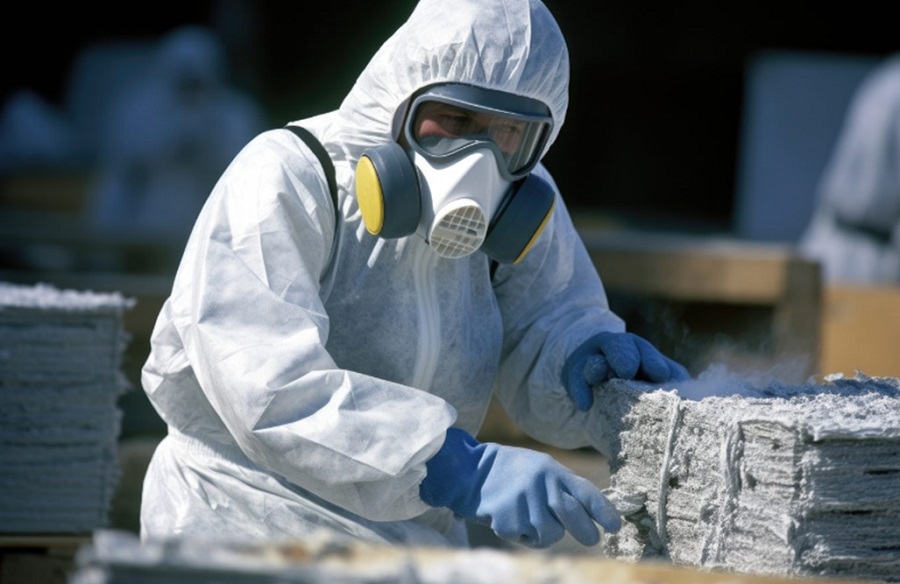Asbestos, once hailed for its versatility, has now become synonymous with danger. The presence of asbestos in buildings poses a serious health risk, necessitating prompt and effective remediation services. Whether you’re a homeowner or a business owner, understanding the essential steps in asbestos remediation is crucial. In this comprehensive guide, we unveil the 8 key steps to ensure effective and thorough asbestos remediation services.
1. Professional Assessment and Survey
The journey to effective asbestos remediation begins with a comprehensive assessment and survey conducted by certified professionals. Trained asbestos assessors will inspect your property to identify the presence, type, and condition of asbestos-containing materials (ACMs). This crucial step sets the foundation for the entire remediation process, guiding subsequent actions based on a thorough understanding of the asbestos situation.
2. Risk Assessment and Management Plan
Once asbestos-containing materials are identified, a detailed risk assessment follows. This step evaluates the potential health risks associated with the identified ACMs and assesses the likelihood of fibre release. Based on this assessment, a comprehensive management plan is developed. The management plan outlines the procedures for safe asbestos removal, containment, and disposal, ensuring the protection of occupants and workers during the remediation process.
3. Containment Measures
Effective containment is a cornerstone of asbestos remediation. Before any removal work begins, the area must be isolated to prevent the spread of asbestos fibres. This involves sealing off the affected area with plastic sheeting, using negative air pressure units to prevent air escape, and installing airlocks for safe entry and exit. A well-executed containment strategy is crucial to minimising the risk of fibre dispersion during removal.
4. Safe Asbestos Removal Techniques
The actual removal of asbestos is a delicate process that demands precision and adherence to strict safety protocols. Certified asbestos removal professionals employ safe techniques, including wet removal methods, to minimise fibre release. Specialised equipment, personal protective gear, and advanced removal techniques are utilised to ensure the safety of both the removal team and the building’s occupants.
5. Thorough Decontamination Procedures
After the removal of asbestos-containing materials, thorough decontamination is imperative. All surfaces within the containment area, including walls, floors, and equipment, undergo meticulous cleaning to eliminate any residual asbestos fibres. Decontamination showers and specialised vacuum systems are employed to ensure that the area is completely free from asbestos contamination.
6. Air Monitoring and Quality Testing
Monitoring the air quality is a critical step in the asbestos remediation process. Air samples are collected and analysed to verify that the removal has been successful and that the air within and around the site is free from asbestos fibres. This step ensures that the remediation meets regulatory standards and provides peace of mind regarding the safety of the environment.
7. Proper Packaging and Disposal
Once asbestos-containing materials are removed and the site is decontaminated, proper packaging and disposal are paramount. ACMs are carefully sealed in leak-proof containers, labelled appropriately, and transported to licensed disposal facilities. Following regulatory guidelines for asbestos waste disposal is crucial to prevent environmental contamination and adhere to legal requirements.
8. Post-Remediation Inspection and Documentation
The final step in effective asbestos remediation services is a post-remediation inspection and documentation. Certified professionals conduct a thorough inspection to ensure that all asbestos has been successfully removed, and the site is safe for reoccupation. Comprehensive documentation, including air monitoring results, disposal records, and a certificate of completion, is provided to the property owner. This documentation is not only proof of compliance but also a valuable resource for future reference.
Conclusion: Safeguarding Health, Ensuring Safety
Effective asbestos remediation services are not just about removing hazardous materials; they are about safeguarding the health and well-being of individuals and communities. By following these 8 key steps, certified professionals ensure that asbestos is handled with the utmost care, from initial assessment to final documentation. Homeowners and business owners alike must recognise the importance of entrusting asbestos remediation to trained experts who can navigate the complexities of the process and guarantee a safe and thorough outcome.

